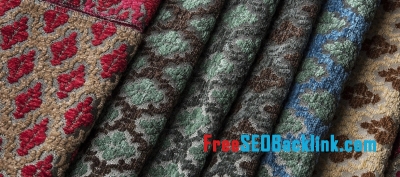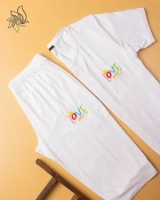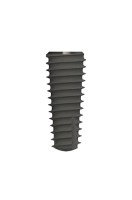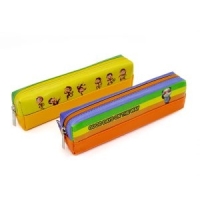Purchasing sofa fabric is a significant decision, impacting not just the aesthetics but also the functionality and longevity of your furniture. The right fabric can transform a living space, adding comfort, style, and personality, while the wrong choice can lead to disappointment and unnecessary expense. Here are essential tips to consider when buying sofa fabric to ensure you make an informed and satisfying choice.
The first step in choosing the right sofa fabric is to evaluate your lifestyle. Families with childrenpets, for instance, will require durable, stain-resistant fabrics. In contrast, a single persona couple might prioritize aesthetics over functionality. Consider factors like the amount of use the sofa will get, potential for spills, and exposure to dirt and wear. Performance fabrics such as microfibersynthetic blends offer excellent durability and stain resistance, making them ideal for high-traffic areas.
The durability of sofa fabric is typically measured by the MartindaleWyzenbeek test, which counts the number of rubs a fabric can withstand before showing wear. A fabric rated above 15,000 double rubs is considered suitable for residential use, while commercial-grade fabrics often exceed 30,000 double rubs. For a household with heavy use, aim for a fabric with a higher rub count to ensure longevity. Fabrics like canvas, denim, and twill are known for their robust qualities.
- Natural Fabrics: Cotton, linen, wool, and silk are natural choices that provide comfort and breathability. Cotton is soft and available in a variety of colors and patterns but can wrinkle and soil easily. Linen offers a crisp, elegant look but is prone to wrinkles and stains. Wool is durable and resistant to pilling and soiling but can be expensive. Silk is luxurious but delicate and best used in low-traffic areas.
- Synthetic Fabrics: Polyester, nylon, acrylic, and olefin are synthetic fabrics designed for durability and resistance to stains and fading. Polyester blends, for example, combine the best of both worlds, offering the softness of natural fibers with the resilience of synthetics. Microfiber, a polyester-based fabric, is particularly popular for its plush feel and ease of cleaning.
- Blended Fabrics: These combine natural and synthetic fibers, aiming to balance comfort and durability. For example, a cotton-polyester blend can provide the softness of cotton with the durability and stain resistance of polyester.
The ease of cleaning and maintaining sofa fabric is a critical consideration. Fabrics treated for stain resistance, such as those with a Teflon coating, can make cleaning spills easier. Removable, machine-washable cushion covers are a practical choice for households with kidspets. For more delicate fabrics, professional cleaning might be necessary, adding to the maintenance cost. Always check the care instructions before purchasing to ensure the fabric fits your lifestyle.
Colorfastness refers to the fabric&rsquos resistance to fadingrunning. This is particularly important if your sofa will be exposed to sunlight. Fabrics that are solution-dyed, where the dye is added to the fiber during production, offer superior colorfastness compared to piece-dyed fabrics, where the dye is applied to the woven fabric. Solution-dyed acrylics, for instance, are highly resistant to fading and are a good choice for brightly lit rooms.
The fabric you choose should complement the style of your sofa and the overall décor of the room. Traditional styles often pair well with classic fabrics like velvet, brocade,damask. Contemporary designs might look best with sleek, minimalist fabrics such as linenmicrofiber. Patterns and colors should also be chosen based on the room's theme and color scheme. Neutral tones provide versatility, while bold colors and patterns can make a statement.
For those concerned with sustainability, consider fabrics that are eco-friendly. Organic cotton, hemp, and linen are biodegradable and have a lower environmental impact than synthetic materials. Additionally, some manufacturers offer fabrics made from recycled materials. Look for certifications such as GOTS (Global Organic Textile Standard)OEKO-TEX Standard 100, which ensure the fabric meets specific environmental and safety criteria.
Before committing to a purchase, it's advisable to order fabric swatches. This allows you to see and feel the material in your home environment, ensuring it meets your expectations for color, texture, and comfort. Pay attention to how the fabric looks in different lighting conditions and against other furniture. Testing a swatch can also give you an idea of how the fabric will wear over time.
Sofa fabrics can vary significantly in price, so it's important to establish a budget. While higher-priced fabrics often offer better quality and durability, there are many affordable options that provide good performance and aesthetics. Balance your budget with the fabric's features and your lifestyle needs. Remember that investing in a more durable fabric can save money in the long run by reducing the need for repairsreplacement.
If you&rsquore uncertain about which fabric to choose, consulting with a professional can be beneficial. Interior designersupholstery experts can provide valuable insights into the best fabrics for your needs and help you navigate the myriad of options available. They can also offer tips on maintaining the fabric to ensure it lasts as long as possible.
Selecting the right sofa fabric involves careful consideration of various factors, from durability and maintenance to style and environmental impact. By assessing your lifestyle, understanding fabric properties, and considering practical aspects like care and colorfastness, you can choose a fabric that not only enhances your sofa&rsquos appearance but also stands up to daily use. Testing samples and seeking professional advice can further ensure that your choice meets your expectations and fits seamlessly into your home.



 Buying Women's Clothes and Blouses
Buying Women's Clothes and Blouses Buying Veal, Lamb, Chicken, Fish, Caviar, Shrimp, Ready Meals, and Sal
Buying Veal, Lamb, Chicken, Fish, Caviar, Shrimp, Ready Meals, and Sal Buying Iranian dental implants and fixtures
Buying Iranian dental implants and fixtures Buying ground coffee and coffee equipment
Buying ground coffee and coffee equipment Buying stationery
Buying stationery Buying an electronic earth device
Buying an electronic earth device
Register comment (5 Score)